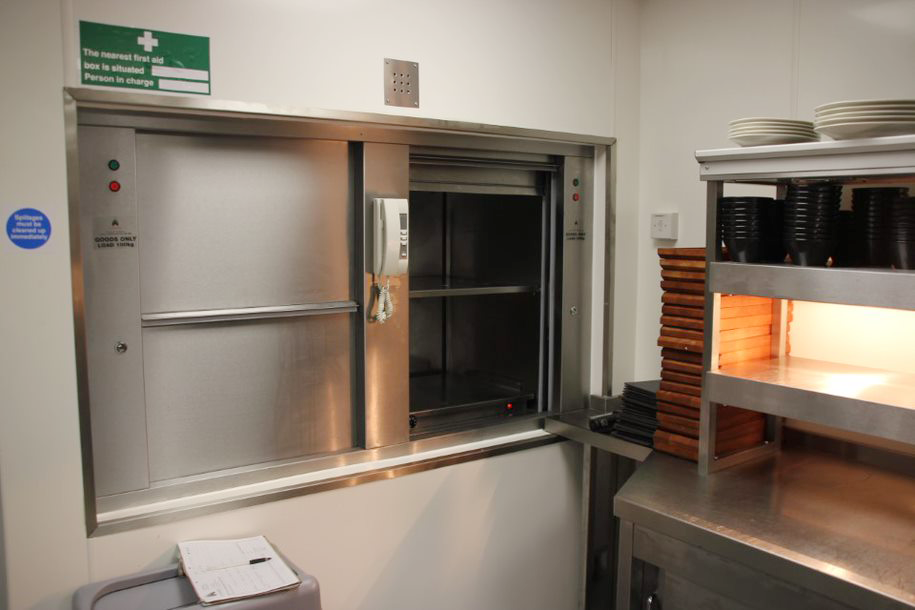Dumbwaiter Elevator: A Smart Vertical Mobility Solution for Modern Architecture

Strong 8k brings an ultra-HD IPTV experience to your living room and your pocket.
Introduction
In contemporary architectural and property development projects, space efficiency and design elegance are critical considerations. Traditional elevator systems, while functional, often present challenges such as bulky shafts, high installation costs, and spatial compromises that can detract from the overall building aesthetics.
For architects, designers, and developers tasked with optimizing vertical transportation, these limitations can be a significant hurdle, especially in projects with tight spatial constraints or unique design demands.
Enter the Dumbwaiter elevator—a compact, versatile, and aesthetically unobtrusive solution tailored to meet the nuanced needs of modern buildings. Originally conceived for small freight transport, this vertical lift system has evolved into a sophisticated component of architectural design, combining utility with innovation.
Offering space-saving advantages and a streamlined installation process, dumbwaiter elevators are rapidly becoming a favored option in residential, commercial, and hospitality environments where efficient vertical movement of goods and small items is paramount.
Design and Functional Advantages of Dumbwaiter Elevators
The primary appeal of the dumbwaiter elevator lies in its ability to integrate seamlessly into buildings without demanding extensive shaft space or structural modifications typical of conventional elevators. Its compact design makes it ideal for applications requiring the transport of small loads such as food, laundry, documents, or maintenance supplies.
Key Design Features:
Space Efficiency: Dumbwaiter dimensions are typically much smaller than traditional elevator cabins, allowing for installation in narrow shafts or between walls.
Load Capacity: Designed primarily for light freight, most systems accommodate loads between 50 to 250 kilograms, optimizing energy use and operational cost.
Versatility: Adaptable to various architectural styles and building types, from upscale residences to bustling restaurants and healthcare facilities.
Ease of Integration: The dumbwaiter lift system can be integrated into new builds or retrofitted into existing structures with minimal disruption.
Aesthetic Flexibility: Customizable interiors and doors enable architects to maintain design consistency and enhance visual appeal.
These attributes position dumbwaiter elevators as a vital tool in overcoming the design limitations posed by traditional freight elevators, especially in settings where space conservation is critical.
Technological Innovations in Dumbwaiter Lift Systems
Recent advancements in dumbwaiter motor technology and control mechanisms have significantly improved the operational efficiency, safety, and reliability of these systems.
Modern dumbwaiter elevators employ energy-efficient motors that reduce power consumption while delivering smooth and quiet performance—key factors in residential and office environments.
Control systems have also evolved from basic push-button panels to sophisticated digital interfaces that allow for programmable operation, remote monitoring, and integration with building automation systems. Safety features such as automatic door locks, emergency stop buttons, and overload sensors are standard in contemporary dumbwaiter installations, ensuring compliance with stringent building codes and occupant protection standards.
Innovations include:
Brushless DC Motors: These motors offer longer lifespan, reduced maintenance, and quieter operation compared to older motor types.
Smart Control Panels: Programmable systems enable multi-floor access, scheduled operations, and fault diagnostics.
Enhanced Safety Protocols: Redundant braking systems and sensor-based load detection improve user safety.
Energy Regeneration: Some dumbwaiter motors incorporate regenerative drives that feed energy back into the building’s grid.
Modular Designs: Prefabricated modular units allow quicker installation and easier maintenance.
These technical improvements have expanded the applicability of dumbwaiter elevators beyond simple freight transport, positioning them as integral elements of smart building design.
Applications and Installation Considerations
The versatility of dumbwaiter elevators allows them to serve multiple sectors, including residential, hospitality, healthcare, retail, and corporate environments. In residences, residential dumbwaiter systems facilitate the movement of groceries, laundry, or meals between floors, enhancing convenience and accessibility.
In commercial settings, they streamline internal logistics by transporting supplies or documents efficiently without disrupting customer or staff flow.
When planning for dumbwaiter installation, several factors must be evaluated to ensure optimal performance and compliance:
Critical Installation Factors:
Shaft Dimensions: Accurate measurement of available space is essential, as dumbwaiter dimensions must accommodate the load size and movement mechanism.
Structural Integration: Coordination with architectural and engineering teams is necessary to maintain building integrity while allowing for smooth shaft and door installation.
Load Requirements: Understanding the typical freight weight and size helps select the appropriate motor and control system.
Power Supply: Electrical specifications must align with the dumbwaiter motor’s requirements, including considerations for backup power in critical environments.
Regulatory Compliance: Adhering to local safety codes, fire regulations, and accessibility standards is mandatory.
A well-planned dumbwaiter installation not only enhances operational efficiency but also minimizes disruption during construction or retrofit phases.
Benefits of Incorporating Dumbwaiter Elevators in Modern Projects
Integrating a dumbwaiter elevator within architectural designs yields multiple benefits that align with the demands of contemporary construction and property development:
Space Optimization: Frees up valuable floor area by reducing the footprint compared to traditional freight elevators.
Cost-Effectiveness: Lower installation and maintenance costs translate into better return on investment.
Enhanced Building Functionality: Improves workflow by enabling dedicated vertical transportation of goods, reducing manual labor and operational delays.
Design Harmony: Enables architects to maintain clean, uncluttered building aesthetics without compromising on utility.
Accessibility: Facilitates better service for individuals with limited mobility, especially in residential or healthcare settings.
These advantages make dumbwaiter elevators a compelling choice for professionals aiming to marry form and function in their projects.
Conclusion
The dumbwaiter elevator exemplifies the fusion of innovation, practicality, and design finesse required in today’s architecture and property development sectors. Its compact footprint, technological sophistication, and flexible application across diverse environments make it an indispensable tool for overcoming the challenges posed by traditional vertical transportation systems.
Architects, designers, and developers seeking to enhance building efficiency, aesthetic appeal, and user convenience should strongly consider the incorporation of dumbwaiter elevators into their designs. By doing so, they embrace a forward-thinking approach to vertical mobility—one that prioritizes smart design and operational excellence in both residential and commercial projects.
Note: IndiBlogHub features both user-submitted and editorial content. We do not verify third-party contributions. Read our Disclaimer and Privacy Policyfor details.


